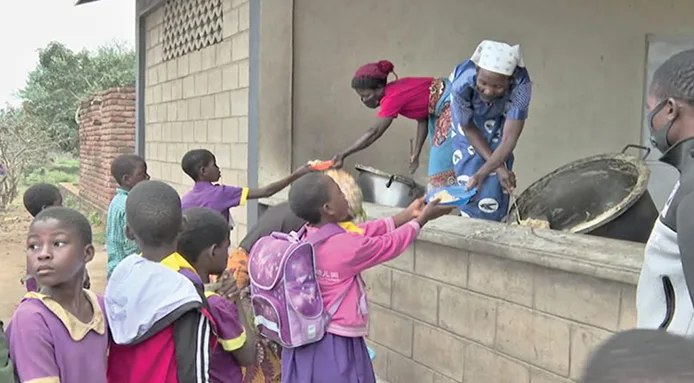SPOTLIGHT
High-Iron Beans Boost Resilience from Farm to Classroom
AGRA’s Advancing Availability of Biofortified Foods in Institutions program is transforming nutrition and agricultural systems in Kenya, Tanzania and Malawi by integrating high-iron bean varieties into school feeding programs and farmer production. By linking demand from nearly one million learners with seed systems and farmer training, the program strengthens resilience across the value chain.
With yields more than doubling—from 0.6 to 1.4 tons per hectare—and over 3,000 metric tons of grain aggregated, the initiative is increasing incomes, improving children’s nutrition, and building stronger food systems. Biofortified crops like Nyota, TARI Bean 6, and NUA-45 are proving that better nutrition is a foundation for long-term agricultural resilience.
In Malawi (where AGRA supports both resilience building and enhancing markets), this effort is transforming school feeding programs and strengthening the future for thousands of children.

Lessons learned from Rwanda’s biofortified bean program
How can we improve nutrition for children and help smallholder farmers access structured markets?
- Strengthen policy frameworks for institutional procurement: Schools can be reliable buyers from local farmers, but government policies must support local sourcing. In countries like Kenya, where such policies exist, stronger enforcement is still needed.
- Change starts with how we present food: High-iron beans are often labeled as “sick people’s food”. Awareness campaigns must reframe the narrative—positioning biofortified foods as a solution for healthy learning and strong communities.
- Government ownership is key: In Kenya, partnerships with institutions like National Council for Nomadic Education in Kenya (NACONEK) are rethinking how school meals are sourced and delivered to support child nutrition and rural farmers.
- Balance supply and demand with aggregation and storage: As production scales, grain prices can drop (e.g., Nyota bean prices fell from KES 180/kg to KES 130/kg). Aggregation, storage, and pricing strategies can help farmers protect their profits.
